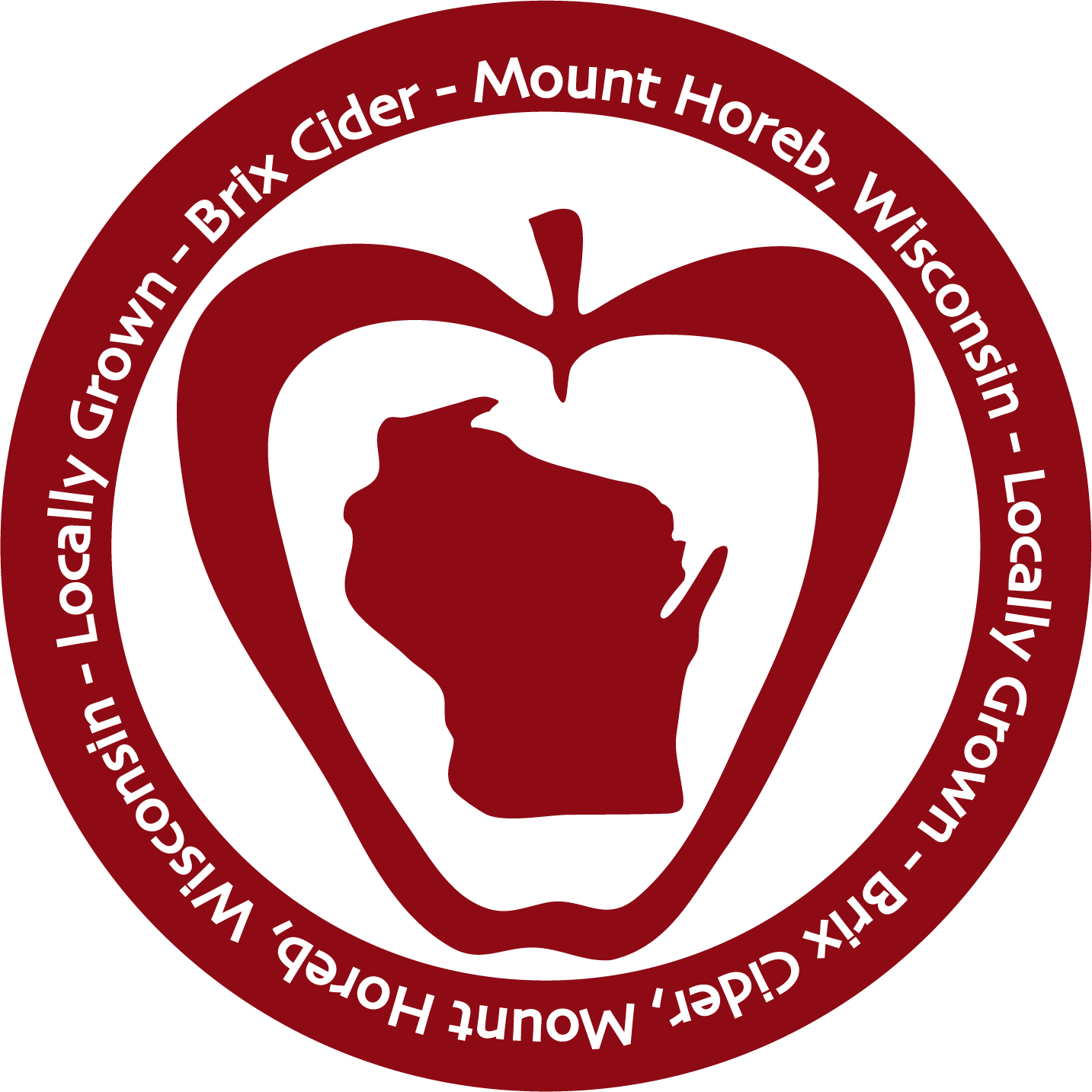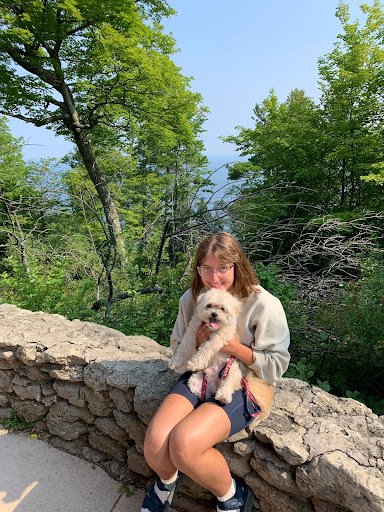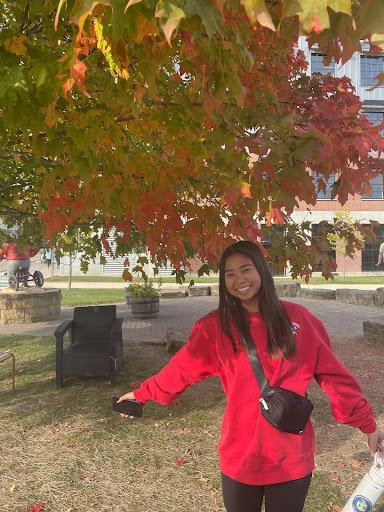Seasonality at Brix
“A model of seasonality as unique as Brix’s financially supports the Mount Horeb community, reduces food emissions, and creates more flavorful and nutritious food!”
Introduction to Us & Our Project:
Hello! The following blog posts were written by five UW- Madison students as part of our UW-Madison environmental studies capstone project. The main motivation behind this project was the strong desire to share what we’ve learned about local food systems and our passion for creating a more sustainable world. Through a series of interviews and discussions with people involved in the Brix Project, we were able to put together this series of blog posts and an accompanying infographic to give people a better understanding of Brix.
Rachel French: Howdy! My name is Rachel and I am a senior studying environmental studies and zoology at UW Madison. I was interested in this project because I recently started working with F.H. King Student Farm. I have learned a lot about agriculture and the complexities that come with trying to farm sustainably. Everybody eats food, and I think there should be a stronger connection between the land and people. Brix is a good model for this way of educated consumption, and I am glad we were able to discuss their strategies for seasonally rotating their menu. I hope this is a system that other places can learn from in order to be a part of the necessary transformation of our current food system.
Maddy McGlone: Hi! My name is Maddy and I’m a senior at UW majoring in environmental studies and history. I decided to take this class as my capstone and get involved in the Brix project because I really enjoyed my previous classes on food systems. I also love cooking and exploring restaurants in the Madison area, especially since I’m from Madison, so I was excited for the opportunity to learn more about my own local food system. Brix’s rotating, seasonal menu was especially interesting to me because I try to cook seasonally in my own kitchen and know that it can be a bit of a challenge. Learning more about how the Brix team works with their farmers to ensure that the menu is as seasonal as possible while also serving the needs of the community has been fascinating to me, and I hope these blog posts showcase this!
Jane Schaub: Hello! My name is Jane and I am a current senior at UW Madison pursuing an undergraduate degree in Environmental Studies and Business Management! I was interested in a project focused on seasonality because of my involvement in Slow Food UW as well as my own experience working in the restaurant industry. Having worked in several restaurants I was extremely intrigued by the fact that Brix not only sources a majority of their products locally but that they also follow a model of seasonality. I wanted to learn more about the relationships and personal experience that allows them to do this as well as create something that shares this concept with their community! I hope our blog posts help to spread the concept of seasonality so that more restaurants may work to adapt it within their own communities!
Rae Johnson: Greetings! My name is Rae, and I am an Environmental Studies and Community & Environmental Sociology major. I was drawn to this project because I have taken a lot of classes regarding food access and inequalities within the food system and this project seemed like a great opportunity to further my interests. I believe that food is too frequently viewed as a commodity and oftentimes people don’t know where their food is coming from. Brix, however, does an incredible job of embracing a model of seasonality and sources within a close proximity. After learning more about Brix and the Brix Project, I knew it was a project I wanted to be a part of! Like Jane mentioned, I am also part of Slow Food–UW and know how much effort goes into sourcing, preparing, and serving food to the community. At Slow Food we are only responsible for putting on one meal a week so the fact that Brix does this five days a week is extremely impressive and is a great business and restaurant model to follow!
Olivia Grose: Hey! My name is Olivia and I am a junior at UW studying Community & Environmental Sociology and Environmental Studies. I wanted to get involved in this project because Brix’s commitment to making delicious and seasonal dishes excited me. While in college, I’ve learned more about the food system and how important it is to support your local farmers, not only for social reasons, but also for the economic and environmental benefits it can have on the surrounding community. Along with Rae and Jane, I am involved in the student organization, Slow Food UW, which focuses on providing community members with good, clean, fair food every week. Through this work we’ve gained insight into just how stressful it can be to run a kitchen. We have so much respect for Matt, Marie, and Kas for the commitment and drive they all have for serving a seasonal menu to their customers.
An Introduction to Seasonality at Brix
A model of seasonality is at the core of the Brix project. Co-owner of Brix, Marie, shares that as soon as they decided to offer food at their restaurant, it was a given that they would use locally sourced seasonal produce. Matt and Marie were in a unique situation compared to many restaurant owners in that they had established relationships with local farmers and producers. So, when they began formulating their menu they knew, in Marie's words, that they would source their produce from their friends. This is a key aspect of the Brix mission: by sourcing seasonally, quite literally from their neighbors and friends, they keep their money in the local community – uplifting themselves and those around them. A model of seasonality as unique as Brix’s financially supports the Mount Horeb community, reduces food emissions, and creates more flavorful and nutritious food!
Seasonality in our food supply is closely connected with our changing climate. With weather patterns becoming more and more unpredictable, farmers are facing new challenges in relation to climate change. Apple farmers are encountering unpredicted freezes after the trees have blossomed, which can cause stunted growth or no growth at all.
Sarah and Pat, owners of Squashington Farm, said they’ve been forced to start planting their produce a couple weeks later than usual, to ensure their young plants won’t face freezing temperatures. Sarah and Pat also noticed the last three or four autumns have been much longer than usual. In the ten years at Squashington, there has never been frost before mid-October. In the 2021 fall season, frost came in September. These differing weather patterns can affect growing seasons negatively and cause harm to the produce.
As climate change continues to affect the planet, it’s important to note there are many ways that local farms and communities can help. For farmers, growing veggies with minimal synthetic pesticides and staying away from fossil fuel-based fertilizers can help reduce the carbon footprint left behind. For community members, it is important to support local farmers and businesses that are working towards leaving a minimal impact on the environment.
In addition to shaping their menu based on what is available from their farmers, the flexibility of the rotating menu allows Brix to incorporate community interests while also experimenting with new items. Brix is located in Southwest Wisconsin’s Driftless Area, a region so named because it was missed by the glacial drift that flattened much of the rest of the American Midwest, leaving the landscape hilly and the soils sandy and nutrient-rich. Brix follows in the footsteps of a long tradition of organic and artisanal food production in the Driftless.
Beyond contributing to a local, seasonal food community, Brix often meets the cultural needs of the Mount Horeb community. Mount Horeb is known as the “troll capital of the world” because of its long history of Norwegian immigration, especially in the 19th century. In our blog posts for each season, we’ll highlight how Brix’s menu celebrates Scandinavian holidays and other yearly events that are exciting and important to the community. In addition to incorporating traditions familiar to the Mount Horeb community, Brix also expands the community’s palate by experimenting with new dishes from many different cultures.
Brix’s favorite troll, by Beth Raboin
From our interviews with Matt, Sarah and Pat, and Head Chef Kas Sonderberg, the overwhelming consensus was that food cooked from in-season produce tastes better than dishes made from produce that has been shipped from other regions. Matt and Marie agreed that the flavor is another reason why they choose to rotate their menu. Matt shared with us that one of his favorite annual moments is when the spring salad returns to their menu, bringing a sign of summer and an abundance of fresh produce to come.
Follow along with us as we explore how Brix’s menu adapts to the changing seasons!
Spring Summer Fall Winter
Our class enjoys a seasonal fall meal at Brix










